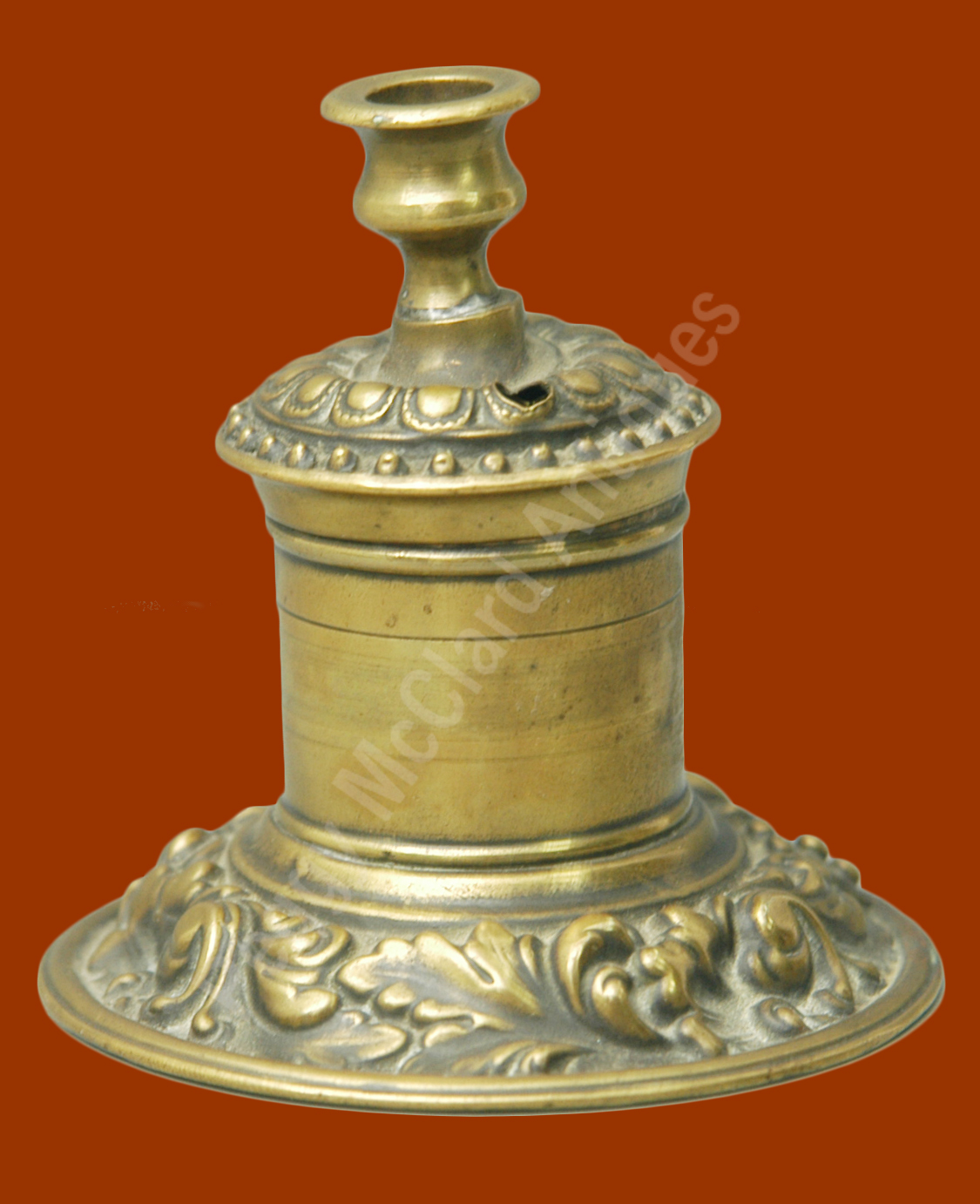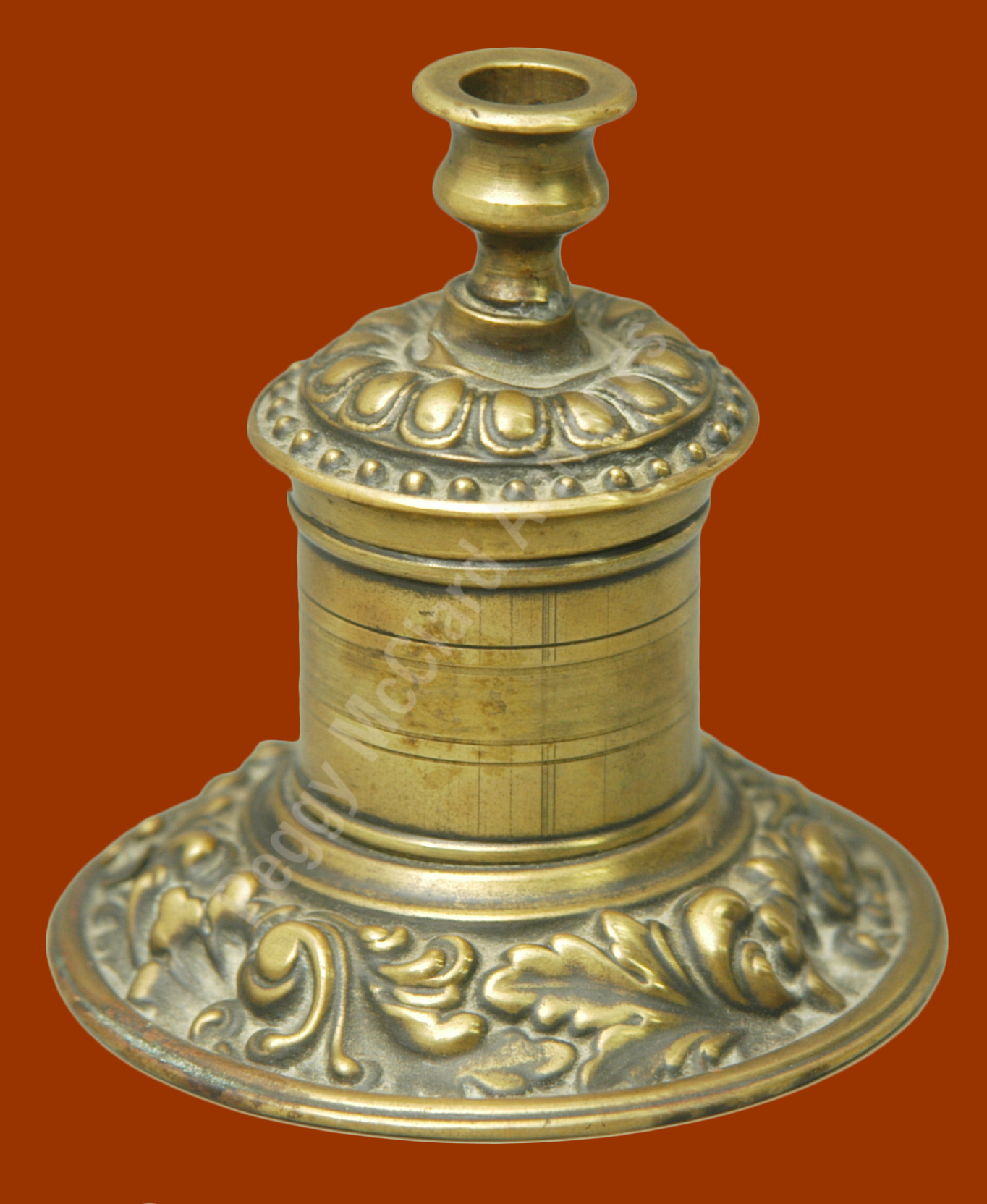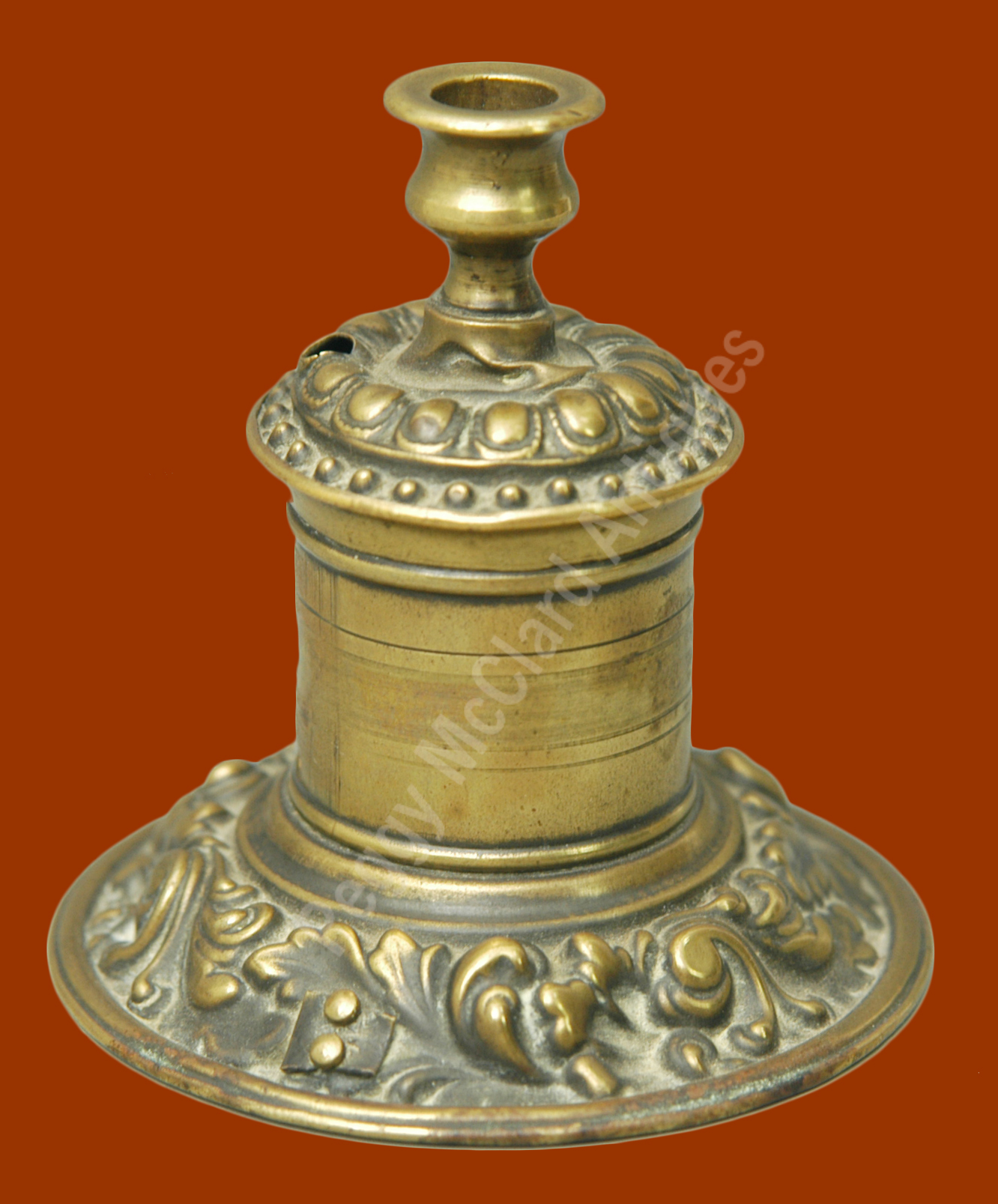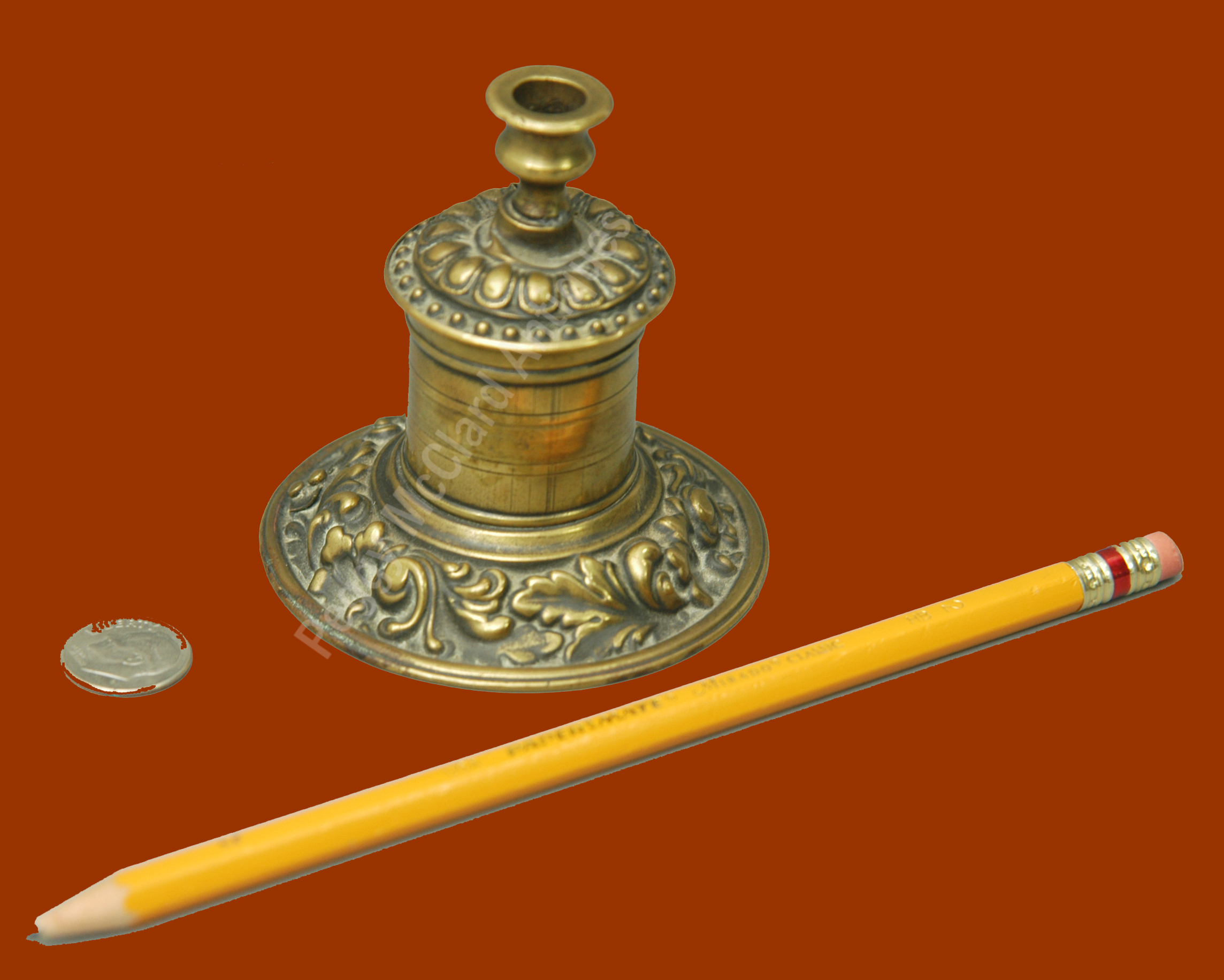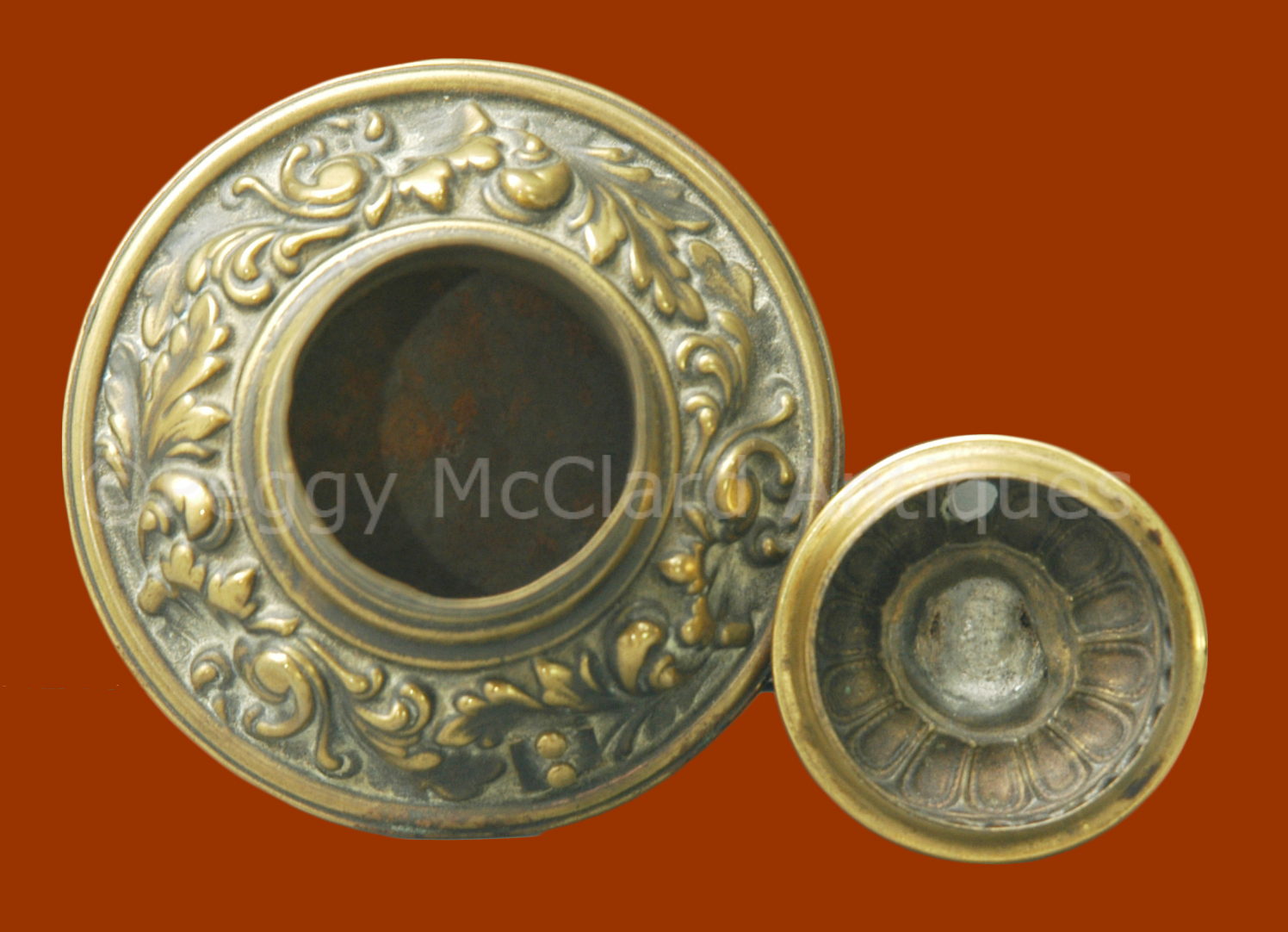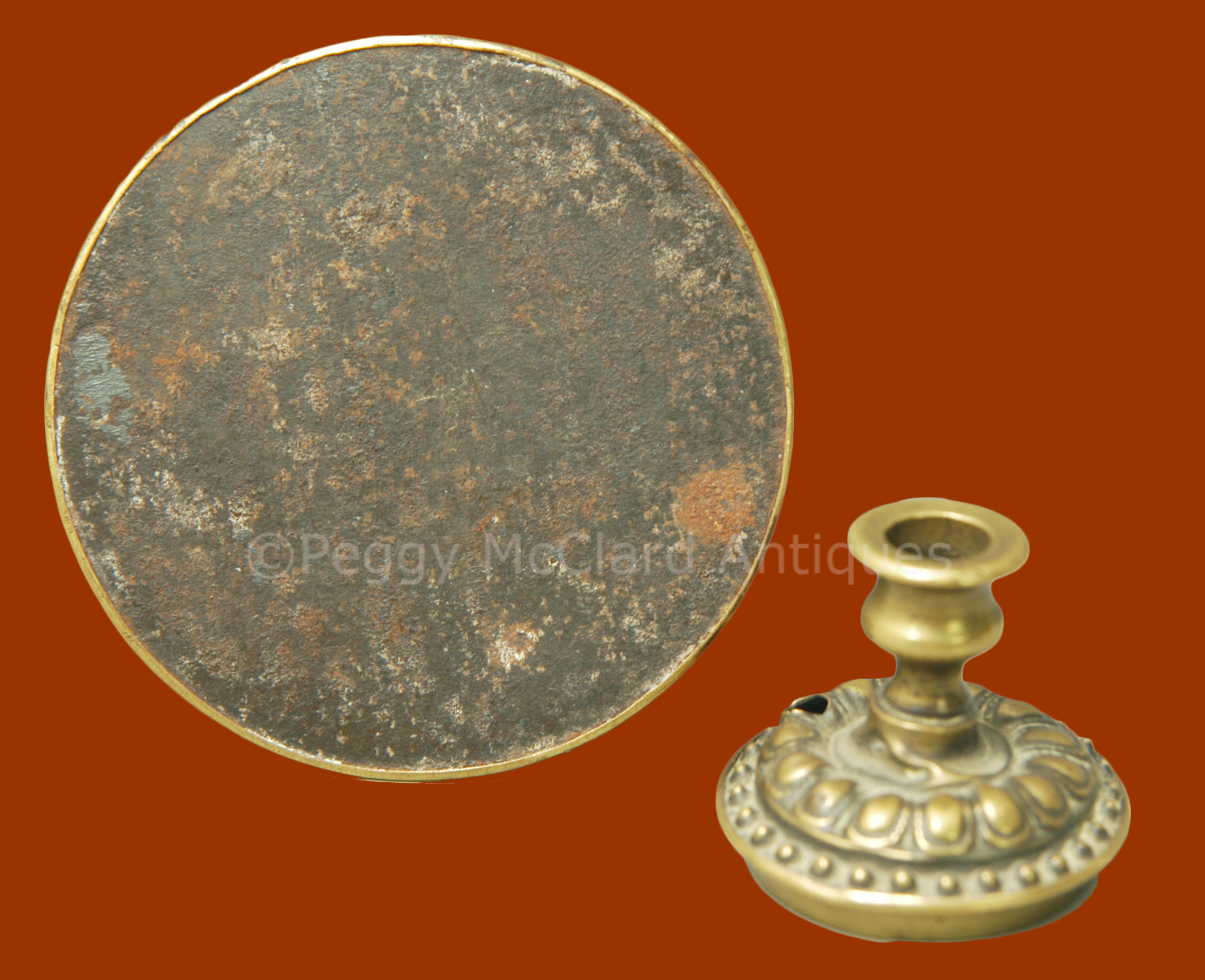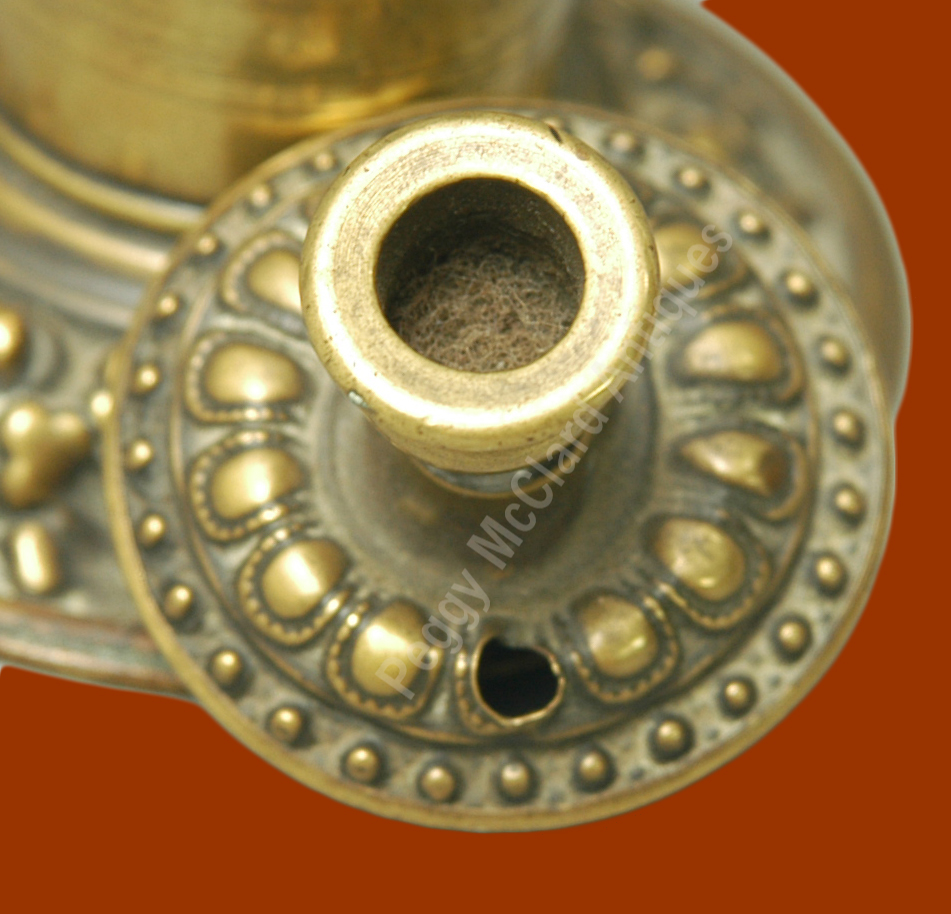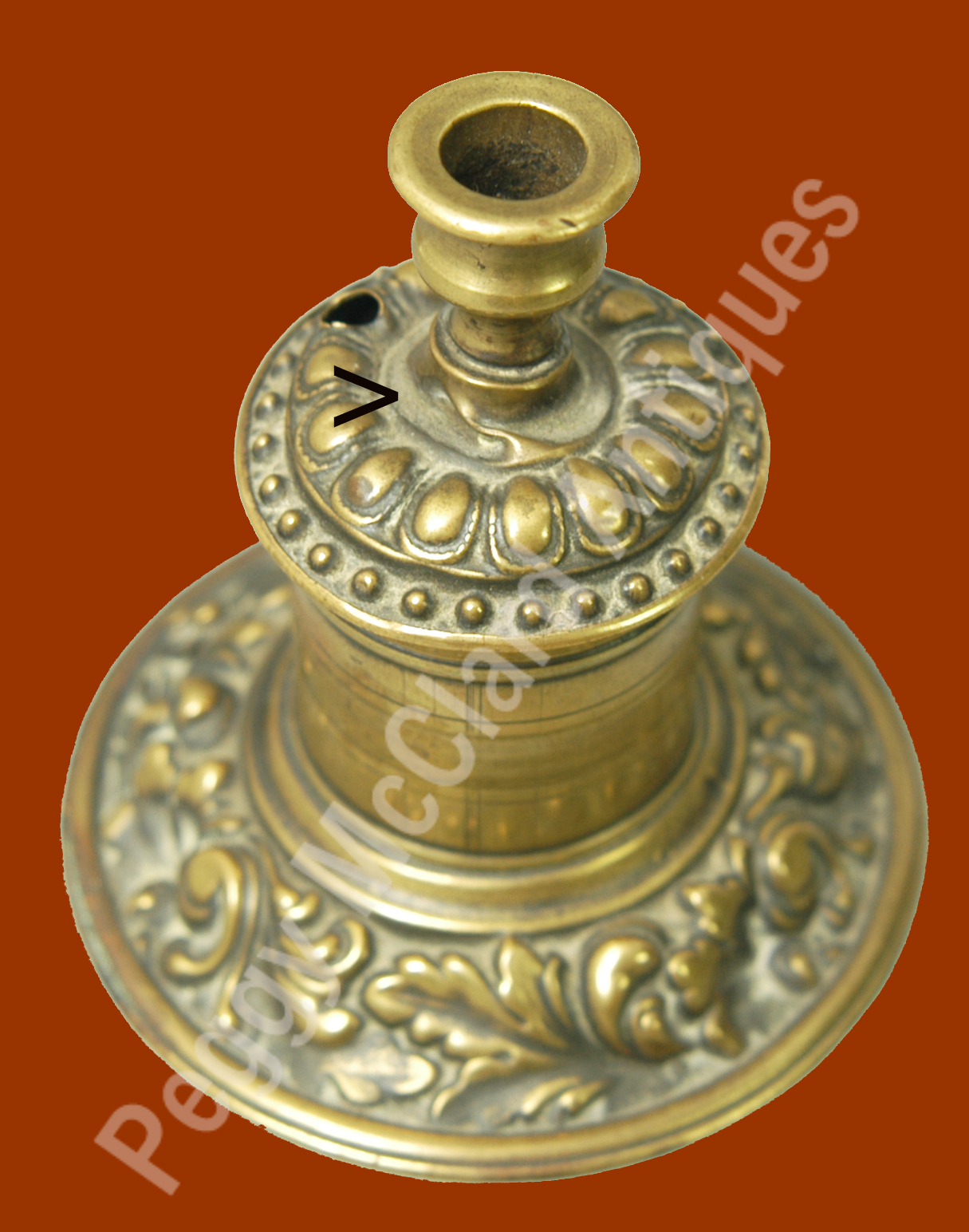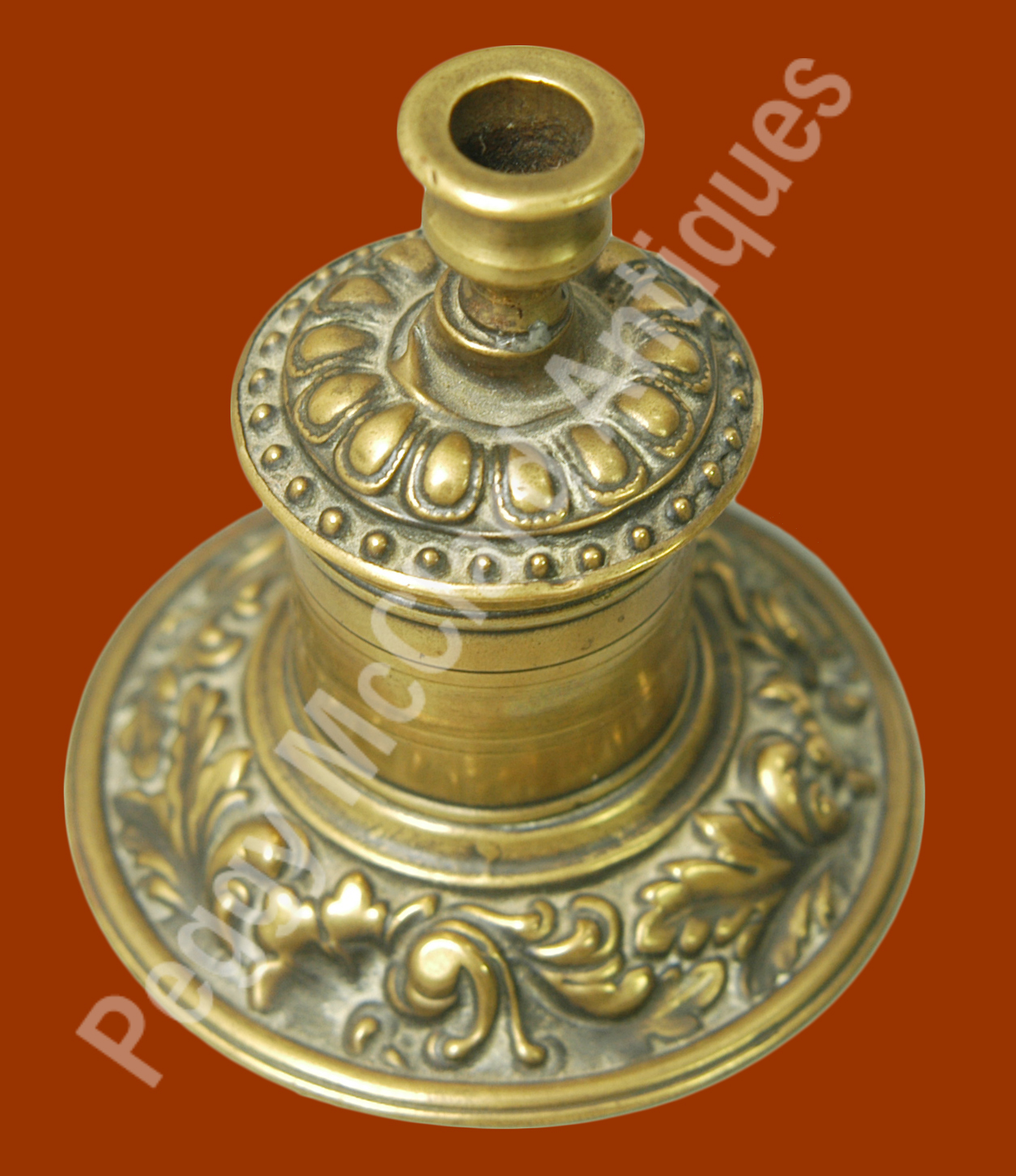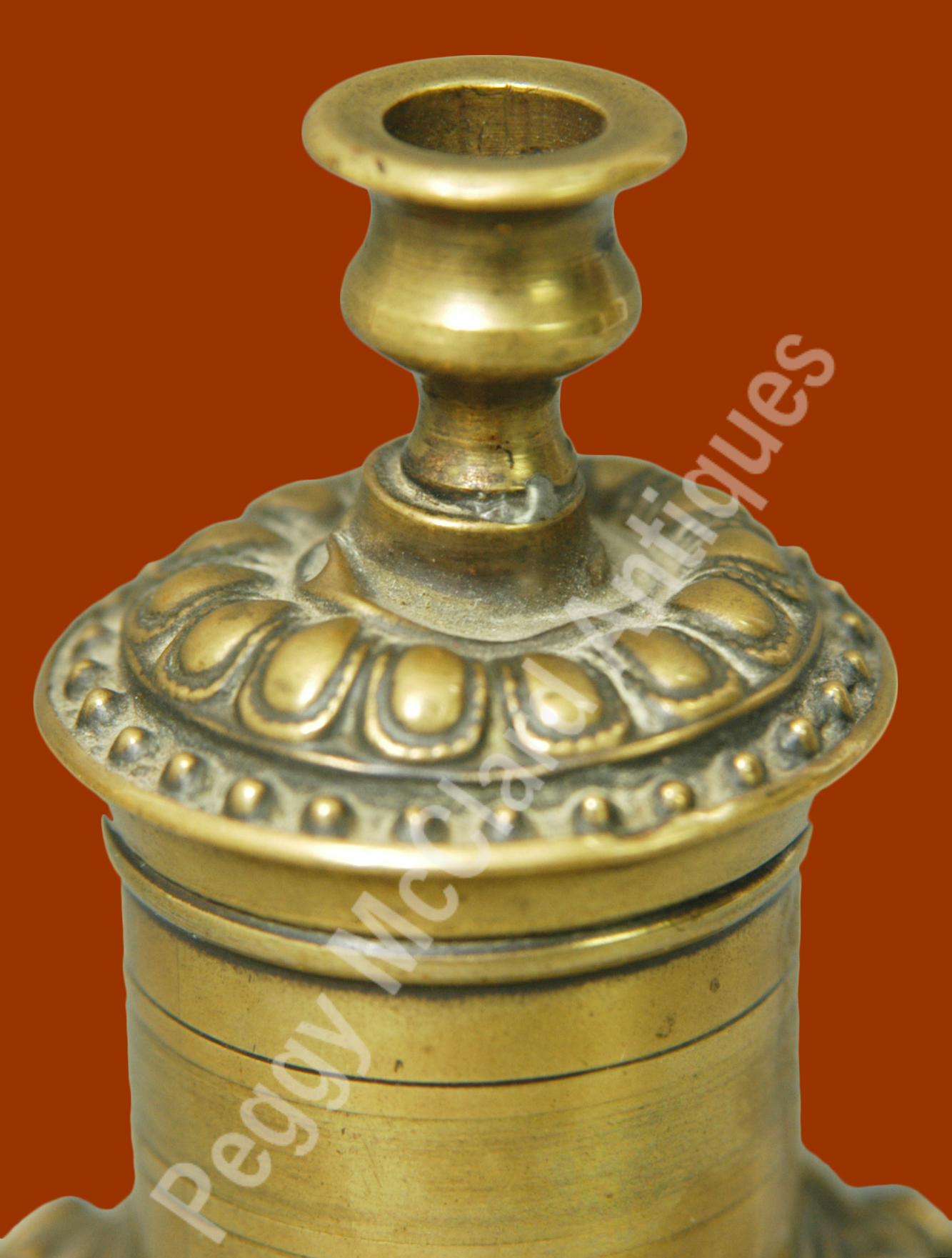
In the 18th century, wax jacks were made in many styles and of various metals. The bougie box was developed from the more simple wax jack during the first decades of the 18th century. Bougie means candle in French. The bougie box seems to have developed on the Continent then migrated to England in the middle of the 18th century. Unlike the wax jack, the bougie box was developed for use as a light. A bougie box is a closed container, usually cylindrical, into which a long coiled taper is placed. The taper is fed up through a small hole in the lid of the box for burning. The burning time of the taper could be controlled by how much taper was pulled through the top hole. The English, however, soon began using the bougie box for the same purpose as the wax jack. Please check my current listing of the other bougie box for a more extensive background on the wax jack.
Offered is a repoussé brass bougie box or traveling candleholder over tin bottom, circa 1810 or earlier. It is Likely Continental, possibly Dutch and quite small at only 2 ¾” tall x 2 ¾” diameter base. As you can see, the repoussé ornamentation is really striking and lovely. The candle cup is small enough to fit a thin tapered candle and it is either a replacement or repaired/reattached to the lid. As you will see in the photos, the candle cup is closed on the bottom, unlike a wax jack which would have a hole to pull coiled sealing wax through. The solder shows that something has been done to the candlecup but whether the candlecup is original (meaning this was truly used as a bougie box for lighting) or a replacement is something I can’t discern. Condition is good except for the denting around the hole in the top, it stands a bit wonky and the solder showing the repair/replacement. All can be seen in the photos.
#5811 $295

